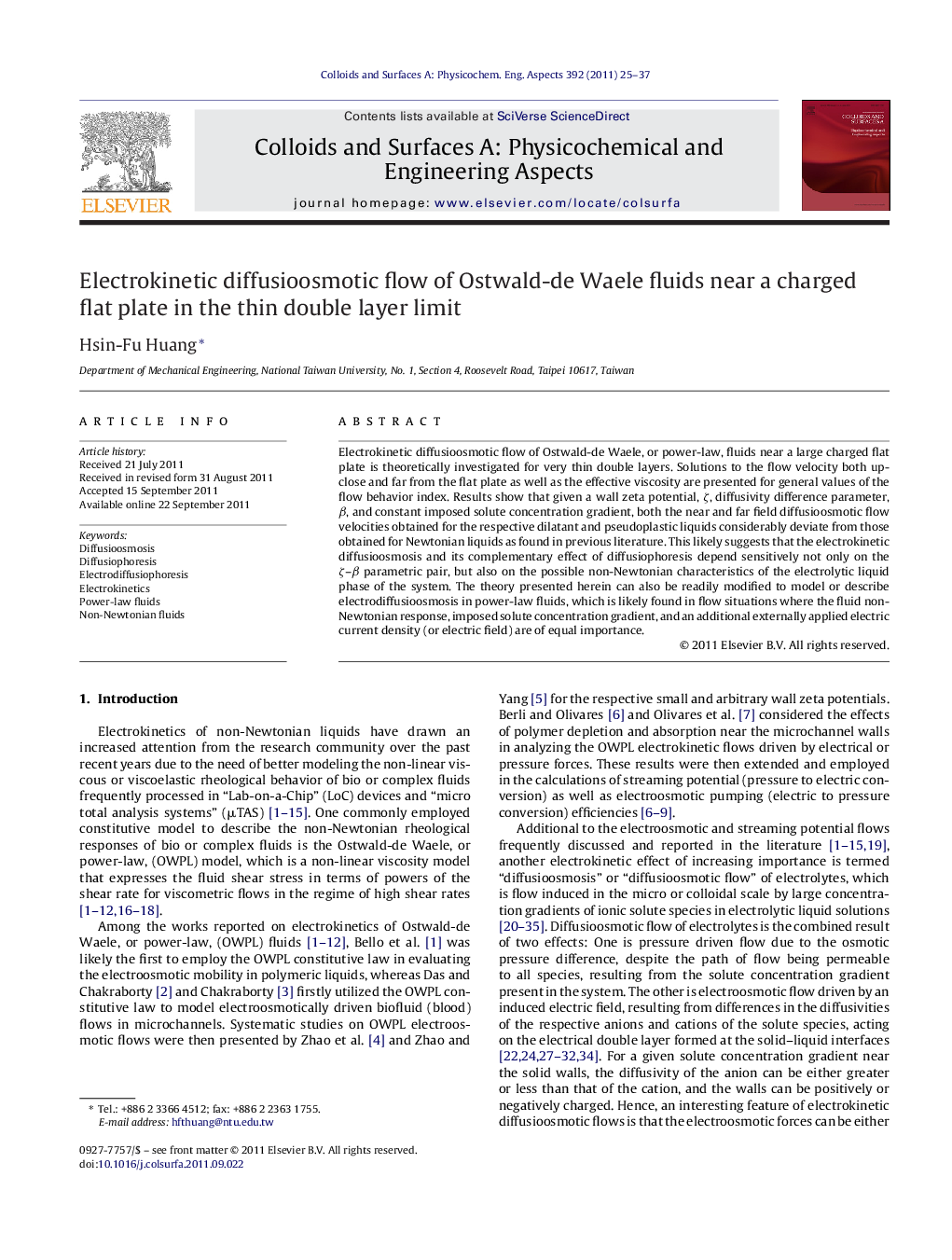| کد مقاله | کد نشریه | سال انتشار | مقاله انگلیسی | نسخه تمام متن |
|---|---|---|---|---|
| 594371 | 879449 | 2011 | 13 صفحه PDF | دانلود رایگان |

Electrokinetic diffusioosmotic flow of Ostwald-de Waele, or power-law, fluids near a large charged flat plate is theoretically investigated for very thin double layers. Solutions to the flow velocity both up-close and far from the flat plate as well as the effective viscosity are presented for general values of the flow behavior index. Results show that given a wall zeta potential, ζ, diffusivity difference parameter, β, and constant imposed solute concentration gradient, both the near and far field diffusioosmotic flow velocities obtained for the respective dilatant and pseudoplastic liquids considerably deviate from those obtained for Newtonian liquids as found in previous literature. This likely suggests that the electrokinetic diffusioosmosis and its complementary effect of diffusiophoresis depend sensitively not only on the ζ–β parametric pair, but also on the possible non-Newtonian characteristics of the electrolytic liquid phase of the system. The theory presented herein can also be readily modified to model or describe electrodiffusioosmosis in power-law fluids, which is likely found in flow situations where the fluid non-Newtonian response, imposed solute concentration gradient, and an additional externally applied electric current density (or electric field) are of equal importance.
Map indicating the direction of the far field diffusioosmotic velocity, u∞*, for dilatant, Newtonian, or pseudoplastic liquids based on different combinations of ζ* and β.Figure optionsDownload as PowerPoint slideHighlights
► Power-law diffusioosmosis near a flat plate with thin double layers is theoretically investigated.
► Solutions to the near and far field velocities are presented for general flow behavior indices.
► Dilatant and pseudoplastic diffusioosmotic velocities are much different from Newtonian ones.
► Rheology of electrolytic liquid phase may be important to diffusioosmosis and diffusiophoresis.
► Present theory can be modified to model electrodiffusioosmosis of power-law liquids.
Journal: Colloids and Surfaces A: Physicochemical and Engineering Aspects - Volume 392, Issue 1, 5 December 2011, Pages 25–37